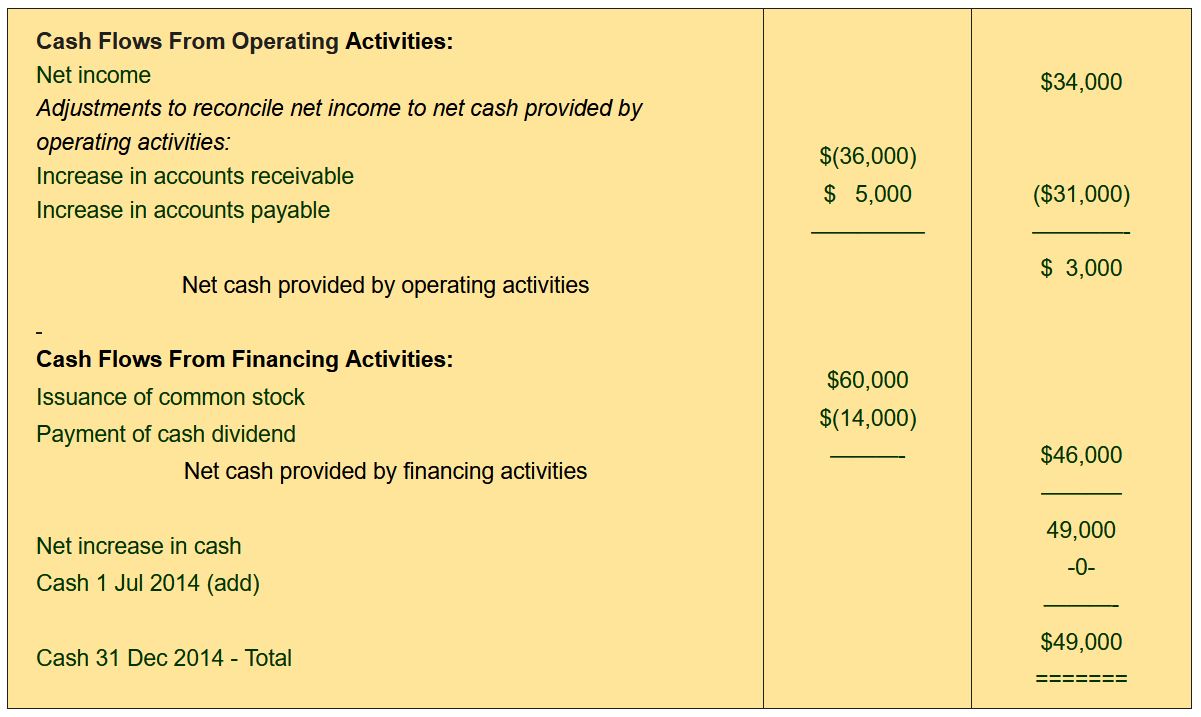Home>Finance>How To Take Out A Life Insurance Policy On Someone Else


Finance
How To Take Out A Life Insurance Policy On Someone Else
Modified: February 21, 2024
Looking to secure the future of your loved ones? Learn how you can take out a life insurance policy on someone else and ensure their financial stability. Expert advice on finance and more.
(Many of the links in this article redirect to a specific reviewed product. Your purchase of these products through affiliate links helps to generate commission for LiveWell, at no extra cost. Learn more)
Table of Contents
- Introduction
- Understanding Life Insurance
- Eligibility to Take Out a Policy on Someone Else
- Consent and Legal Requirements
- Steps to Take Out a Life Insurance Policy on Someone Else
- Choosing the Right Policy
- Naming the Beneficiary
- Paying the Premiums and Managing the Policy
- Ethical Considerations and Legal Pitfalls
- Conclusion
Introduction
Welcome to the world of life insurance, where financial protection meets peace of mind. Life insurance is a crucial financial tool that provides a safety net for your loved ones in the unfortunate event of your passing. While traditional life insurance policies are typically taken out by the insured individual, there may be circumstances where you may want to explore the option of taking out a life insurance policy on someone else. This could be a family member, spouse, or even a business partner.
In this comprehensive guide, we will explore the intricacies of taking out a life insurance policy on someone else. We will delve into the eligibility requirements, legal considerations, and ethical implications of such a decision. Whether you are looking to protect your loved ones or have a financial interest in someone else’s life, understanding the process and implications is vital.
It’s important to note that taking out a life insurance policy on someone else requires a thorough understanding of the legal, financial, and ethical aspects involved. This guide aims to provide you with a clear understanding of the steps and considerations involved, helping you make an informed decision.
Now, let’s dive into the world of life insurance and explore how you can take out a life insurance policy on someone else.
Understanding Life Insurance
Before delving into taking out a life insurance policy on someone else, it’s important to have a clear understanding of what life insurance is and how it works.
Life insurance is a contract between an insurance provider and an individual (referred to as the insured), where the insurance provider agrees to pay a predetermined amount of money, known as the death benefit, to a designated beneficiary upon the insured’s death. This financial protection ensures that the insured’s loved ones are financially secure and can maintain their standard of living even in the absence of the insured’s income.
There are different types of life insurance policies available, including term life insurance, whole life insurance, and universal life insurance. Term life insurance provides coverage for a specified period, typically 10, 20, or 30 years, while whole life insurance and universal life insurance provide coverage for the insured’s entire lifetime.
The cost of life insurance, known as the premium, is determined based on various factors, including the insured’s age, health, lifestyle, and the amount of coverage desired. Additionally, the type of policy chosen and the length of coverage also influence the premium.
Life insurance policies offer a range of benefits, including financial protection for loved ones, the ability to cover final expenses, such as funeral costs, the option to accumulate cash value (in the case of whole life and universal life policies), and the potential to borrow against the policy’s cash value.
Now that you have a basic understanding of life insurance, let’s explore the eligibility requirements for taking out a policy on someone else.
Eligibility to Take Out a Policy on Someone Else
While it is possible to take out a life insurance policy on someone else, there are certain eligibility criteria that must be met. It’s essential to understand these requirements to determine if you are eligible to proceed with the process.
1. Insurable Interest: To take out a life insurance policy on someone else, you must have an insurable interest in their life. Insurable interest refers to a financial interest or relationship that would be adversely affected by the insured individual’s death. Common examples include spouses, children, business partners, or individuals who rely on the insured’s income.
2. Consent: In most cases, you will need the consent of the person you wish to insure. It is essential to have an open and honest conversation with them to ensure they are comfortable with the idea. Without their consent, it may not be possible to proceed with taking out the policy.
3. Age Restrictions: Insurance providers may have age restrictions in place for both the policyholder and the insured individual. It’s important to check with the insurance provider to ensure both parties meet the age requirements.
4. Insurable Risk: The insured individual must meet the insurance provider’s underwriting guidelines and pass their assessment of insurability. Factors such as the individual’s age, health condition, and lifestyle choices may impact their insurability and the premium rate.
5. Legal Requirements: It is crucial to comply with legal requirements specific to your jurisdiction. Consult with a legal professional to ensure you adhere to all necessary legal obligations and regulations.
These eligibility requirements ensure that taking out a life insurance policy on someone else is done with their consent and in their best interest. It is essential to approach this process responsibly and ethically to avoid any potential complications or legal pitfalls. Now that we understand the eligibility criteria, let’s explore the steps involved in taking out a life insurance policy on someone else.
Consent and Legal Requirements
When it comes to taking out a life insurance policy on someone else, obtaining consent from the insured individual is of utmost importance. This ensures transparency and ethical practice throughout the process. Consent serves as a legal requirement and protects the rights and interests of the insured individual.
1. Informed Consent: It is crucial to provide the insured individual with all the necessary information regarding the life insurance policy. This includes details about the coverage, premium payments, potential beneficiaries, and any other relevant terms and conditions. This allows the insured individual to make an informed decision and understand the implications of the policy.
2. Written Consent: It is recommended to obtain written consent from the insured individual. This can be in the form of a signed document or a written acknowledgment of their consent. This ensures a clear record of consent and can serve as evidence in case of any disputes or legal issues in the future.
3. Legal Considerations: It’s essential to consult with a legal professional to ensure compliance with all legal requirements and regulations. The specific laws surrounding taking out a life insurance policy on someone else may vary depending on your jurisdiction. A legal expert can guide you through the process, ensuring that all necessary legal obligations are met.
4. Beneficiary Designation: As the policyholder, you should clarify the process of designating the beneficiary. Ensure that the insured individual understands the beneficiary designation and has the opportunity to provide input or make any necessary changes. This ensures that their wishes are respected and properly documented.
By obtaining consent and adhering to legal requirements, you can proceed with confidence in taking out a life insurance policy on someone else. This ensures that the process is conducted ethically, transparently, and in accordance with applicable laws. Now that we understand consent and legal requirements, let’s explore the steps involved in taking out a life insurance policy on someone else.
Steps to Take Out a Life Insurance Policy on Someone Else
Taking out a life insurance policy on someone else is a multi-step process that requires careful consideration and attention to detail. By following these steps, you can navigate the process smoothly and ensure that both the insured individual and the policyholder’s interests are protected.
1. Assess the Need: Determine the reason for taking out a life insurance policy on someone else. Evaluate the financial impact their passing would have on you or other beneficiaries. Consider factors such as outstanding debts, financial responsibilities, and the need to replace lost income.
2. Research Insurance Providers: Compare insurance providers to find the one that best suits your needs. Look for reputable companies with a strong track record in the industry. Consider their policy options, customer reviews, financial stability, and customer service.
3. Determine the Coverage Amount: Calculate the appropriate coverage amount based on the financial requirements of the insured individual and the policyholder. Consider factors such as the insured individual’s income, outstanding debts, future financial goals, and potential expenses.
4. Gather Information: Collect all necessary information about the insured individual, such as their personal details, health history, lifestyle choices, and any other information required by the insurance provider for underwriting purposes.
5. Consult with an Insurance Agent: Seek guidance from an experienced insurance agent who can help you navigate the process and choose the most suitable policy for your needs. They can provide valuable insights and assist with completing the necessary paperwork.
6. Complete the Application: Fill out the insurance application accurately and provide all required information. Be transparent about the purpose of the insurance policy and ensure all relevant details are disclosed.
7. Undergo the Underwriting Process: The insurance provider will assess the risk associated with the insured individual and determine the premium rate. This may involve medical examinations, health questionnaires, and evaluation of other factors affecting the insurability of the individual.
8. Review the Policy Terms: Carefully review the terms and conditions of the policy, including the coverage, premium payments, beneficiary designation, and any exclusions or limitations. Seek clarification from the insurance provider or agent if needed.
9. Obtain Consent and Signatures: Ensure that the insured individual has provided their consent and has signed all necessary documents. This includes the application, any consents or authorizations required by the insurance provider, and beneficiary designations.
10. Pay Premiums and Initiate Coverage: Once the policy is approved, arrange for the premium payments to be made. Once the premiums are paid, the life insurance policy will go into effect, providing the desired coverage for the insured individual.
By following these steps, you can successfully take out a life insurance policy on someone else. Remember to approach the process with due diligence, transparency, and respect for the insured individual’s wishes and privacy.
Choosing the Right Policy
When taking out a life insurance policy on someone else, it is crucial to select the right type of policy that aligns with your needs and the needs of the insured individual. Consider the following factors to help you make an informed decision.
1. Term Life Insurance: Consider a term life insurance policy if you require coverage for a specific duration, such as until a mortgage is paid off or until children reach adulthood. Term life insurance policies offer a death benefit but do not accumulate cash value.
2. Whole Life Insurance: Whole life insurance provides permanent coverage for the insured individual’s lifetime. It accumulates cash value over time, potentially allowing you to borrow against it or use it as an investment vehicle. However, premiums for whole life insurance policies are generally higher than those for term life insurance.
3. Universal Life Insurance: Universal life insurance offers flexibility in premium payments and death benefit amounts. It also builds cash value, but fluctuates based on investment performance. Universal life insurance is suitable for those seeking both insurance coverage and investment potential.
Consider the financial goals of the insured individual and the policyholder in order to determine which type of policy will provide the most appropriate coverage and benefits.
Additionally, consider the following factors when choosing a policy:
1. Coverage Amount: Calculate the appropriate amount of coverage based on the financial needs of the insured individual and the policyholder. This should take into account outstanding debts, future expenses, and income replacement requirements.
2. Premium Affordability: Evaluate the premium payments and ensure they are affordable for the policyholder. If the premiums are too high, it may lead to lapses in coverage or financial strain.
3. Add-On Riders: Explore any additional riders or benefits that can enhance the policy’s coverage. These may include critical illness riders, disability riders, or waiver of premium riders. Assess whether these riders are necessary based on the specific situations and needs of the insured individual.
4. Insurance Provider Reputation: Research the reputation and financial stability of the insurance provider. Look for companies with a strong track record, excellent customer service, and a proven ability to meet claim obligations.
By carefully considering these factors, you can choose the right life insurance policy that offers comprehensive coverage and meets the needs of both the insured individual and the policyholder.
Naming the Beneficiary
When taking out a life insurance policy on someone else, one of the essential steps is designating a beneficiary. The beneficiary is the person or entity who will receive the death benefit upon the insured individual’s passing. Consider the following factors when naming the beneficiary:
1. Relationship and Financial Dependence: Choose a beneficiary who has a significant financial dependency on the insured individual. This could be a spouse, child, or any individual or organization that relies on the insured’s income or financial support.
2. Multiple Beneficiaries: You can name multiple beneficiaries in the policy to ensure that the death benefit is distributed according to your wishes. Consider the percentage allocation to each beneficiary and review the designation periodically to account for any changes in circumstances.
3. Contingent Beneficiary: Designate a contingent beneficiary to ensure that if the primary beneficiary predeceases the insured individual, the death benefit will be redirected to the contingent beneficiary. This provides an additional layer of protection and avoids complications in case the primary beneficiary is unable to receive the death benefit.
4. Minors or Incapacitated Beneficiaries: If you name a minor or an individual with limited capacity as a beneficiary, consider establishing a trust to manage the funds on their behalf. This ensures that the money is used for their benefit and managed appropriately until they reach a certain age or meet specific conditions.
5. Review and Update: Regularly review the beneficiary designation to ensure it reflects your current wishes and circumstances. Life events such as marriage, divorce, births, or deaths may require updates to the beneficiary designation to align with your intentions.
6. Communicate and Document: Have open and transparent communication with the designated beneficiary about your decision. This ensures they are aware of their role and the potential financial support they may receive. Additionally, keep all necessary documentation in a safe place, including the policy document, beneficiary designation forms, and any related communication.
It is essential to carefully consider the selection of beneficiaries and review the designation periodically to ensure that the life insurance proceeds are distributed according to your wishes. Consult with an insurance professional or legal advisor if you need assistance in navigating the beneficiary designation process.
Paying the Premiums and Managing the Policy
Once you have taken out a life insurance policy on someone else, it is crucial to stay on top of premium payments and effectively manage the policy. This ensures that the coverage remains in force and the intended beneficiaries receive the death benefit when the time comes. Here are some important considerations for paying the premiums and managing the policy:
1. Understand the Premium Payment Options: Familiarize yourself with the available premium payment options offered by the insurance provider. Common options include monthly, quarterly, semi-annual, or annual payments. Choose a payment frequency that aligns with your financial situation and ensures timely premium payments.
2. Set Up Automatic Payments: To avoid missed payments, consider setting up automatic premium payments through your bank account or credit card. This helps to ensure that premiums are paid on time and eliminates the risk of a policy lapse due to non-payment.
3. Evaluate Payment Grace Periods: Familiarize yourself with the grace period provided by the insurance provider. A grace period is the time during which you can make a premium payment without the policy lapsing. Understand the grace period length and any associated fees or charges to avoid policy disruptions.
4. Review Policy Statements: Regularly review the policy statements sent by the insurance provider. These statements provide important information regarding the current status of the policy, including the death benefit, cash value (if applicable), and any changes or updates to the policy.
5. Keep Contact Information Up-to-Date: Ensure that the insurance provider has your updated contact information, including your current address, phone number, and email address. This ensures that you receive important correspondence about the policy and any changes or updates to the terms and conditions.
6. Monitor Changes in Circumstances: Stay vigilant about changes in the insured individual’s circumstances, such as major life events or changes in health. These changes may impact the policy’s coverage or premium rates. Notify the insurance provider and consult with an insurance professional if any adjustments or updates are necessary.
7. Review Coverage Adequacy: Periodically reevaluate the coverage amount to ensure it aligns with the insured individual’s current financial needs and obligations. If there have been significant changes in their life, such as the birth of a child or a major financial milestone, consider adjusting the coverage accordingly.
By paying the premiums on time and effectively managing the policy, you ensure that the life insurance coverage remains in force and provides the intended financial protection for the insured individual and the beneficiaries. Regularly reviewing the policy and staying informed about any changes or updates allows you to make informed decisions and maintain the policy’s effectiveness.
Ethical Considerations and Legal Pitfalls
When taking out a life insurance policy on someone else, there are several ethical considerations and potential legal pitfalls that you must be aware of. Understanding these factors ensures that you approach the process responsibly and avoid any negative consequences. Here are some important points to consider:
1. Consent and Transparency: It is critical to obtain the informed consent of the insured individual before taking out a life insurance policy on them. Openly communicate with them about the purpose of the policy, its implications, and their rights as the insured. Transparency is key to maintaining trust and ethical practice throughout the process.
2. Insurable Interest: Ensure that you have a valid insurable interest in the life of the insured individual. Taking out a life insurance policy on someone without a legitimate financial interest can be unethical and potentially illegal.
3. Disclosure of Information: Provide accurate and complete information about the insured individual’s health, lifestyle, and any other relevant factors required by the insurance provider during the underwriting process. Failing to disclose pertinent information can result in policy cancellation or denial of claims in the future.
4. Avoiding Stranger-Originated Life Insurance (STOLI) Practices: STOLI refers to the practice of someone who has no insurable interest in the insured’s life taking out a life insurance policy with the intention of selling it later. Such practices are considered unethical and may be illegal in many jurisdictions.
5. Policy Ownership and Beneficiary Designation: Clearly establish the policy ownership and beneficiary designation, ensuring that the insured individual understands and consents to these decisions. Carefully review and update the beneficiary designation as needed to align with the insured’s wishes and reflect any significant life changes.
6. Professional Guidance: Seek advice from insurance professionals and legal experts who specialize in life insurance. They can provide guidance on navigating the ethical considerations and legal requirements specific to your situation and jurisdiction.
7. Compliance with Laws and Regulations: Familiarize yourself with the laws and regulations governing life insurance in your jurisdiction. Adhere to all legal obligations, including obtaining necessary licenses or permits and following specific guidelines regarding premium payments, policy terms, and beneficiary designations.
It is essential to approach the process of taking out a life insurance policy on someone else with integrity, transparency, and a genuine insurable interest. By adhering to ethical considerations and legal obligations, you can ensure a responsible and legally compliant approach to securing financial protection for both the insured individual and the beneficiaries.
Conclusion
Taking out a life insurance policy on someone else is a significant decision that requires careful consideration of ethical considerations, legal requirements, and the financial well-being of both the insured individual and the policyholder. By understanding the steps involved, the importance of consent, and the need for transparency, you can navigate the process responsibly and ethically.
It is crucial to have a valid insurable interest in the life of the insured individual and to obtain their informed consent before proceeding with the policy. Compliance with legal requirements and regulations specific to your jurisdiction is essential to ensure that the policy is legally valid and provides the intended financial protection.
Choosing the right policy, naming appropriate beneficiaries, and effectively managing premium payments and policy details are critical aspects to consider. Regularly reviewing the coverage, staying informed about changes in circumstances, and maintaining open communication with the insured individual and beneficiaries are key to ensuring the policy remains effective and aligned with their needs.
Ethics and transparency should be at the forefront of your decision-making throughout the entire process. Avoid engaging in any practices that could be considered unethical, such as stranger-originated life insurance (STOLI), and ensure that disclosure of relevant information is accurate and complete.
By approaching the process responsibly, taking into account the well-being and interests of all parties involved, and seeking professional guidance when needed, you can navigate the complexities of taking out a life insurance policy on someone else successfully.
Remember, life insurance serves as a critical financial tool that provides peace of mind and protection for your loved ones. Taking the time to understand the requirements, consider the ethical implications, and manage the policy effectively ensures that the intended goals of financial security and protection are met.














